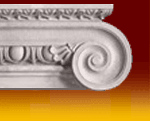|
| |
German HISTORY - All Facts and Events
-
Early History
-
Medieval Germany (dynasties: the Merovingian, the Carolingian, the Saxon, the Salian, etc.)
-
The Protestant Reformation (Martin Luther, Resistance to Lutheranism, The Peace of Augsburg)
-
The Thirty Years' War, 1618-48 (The Counter-Reformation, Military Campaigns, The Peace of Westphalia)
-
The Age of Enlightened Absolutism, 1648-1789 (Austria and Prussia, The Smaller States)
-
The French Revolution and Germany
-
The German Confederation, 1815-66 (Major Trends Toward Unification, The Revolutions of 1848, The Restoration)
-
Bismarck and Unification
-
Imperial Germany (Political Parties, The Economy and Population Growth, The Tariff Agreement of 1879 and Its Social Consequences, World War
I, etc.)
-
The Weimar Republic, 1918-33 (The Weimar Constitution, The Stresemann Era, Hitler and the Rise of National Socialism)
-
The Third Reich, 1933-45 (The Consolidation of Power, The Outbreak of World War II, Total Mobilization, Resistance, and the Holocaust, Defeat)
-
Postwar Occupation and Division (The Establishment of Occupation Zones, The Nuremberg Trials and Denazification, The Birth of the FRG and GDR, etc.)
-
West Germany and the Community of Nations (Rearmament, Ludwig Erhard and the Grand Coalition)
-
The Ulbricht Era, 1949-71 (Consolidation of the New State, Planned Economy, The Berlin Wall, etc.)
-
The Social Democratic-Free Democratic Coalition, 1969-82 (Willy Brandt, Ostpolitik, Helmut Schmidt, The Student Movement and Terrorism)
-
The Christian Democratic/Christian Socialist-Free Democratic Coalition, 1983-
-
The Honecker Era, 1971-89 (The Conference on Security and Cooperation in Europe, Relations Between the Two Germanys, The Last Days of East Germany)
-
Opening of the Berlin Wall and Unification
The information is provided by the Library of Congress. This study attempts to review Germany and treat its dominant social, political, economic, and military aspects in a concise
and objective manner.
The name Germany is used in three senses: first, it refers to the region in Central Europe commonly regarded as
constituting Germany, even when there was no central German state, as was the case for most of Germany's history; second,
it refers to the unified German state established in 1871 and existing until 1945; and third, since October 3, 1990, it refers
to the united Germany, formed by the accession on this date of the German Democratic Republic (GDR, or East Germany) to the
Federal Republic of Germany (FRG, or West Germany). The name Federal Republic of Germany refers to West Germany from
its founding on May 23, 1949, until German unification on October 3, 1990. After this date, it refers to united Germany. For
the sake of brevity and variety, the Federal Republic of Germany is often called simply the Federal Republic.
The Federal Republic of Germany consists of sixteen states (Laender; sing., Land ). Five of these Laender
date from July 1990, when the territory of the German Democratic Republic was once again divided into Laender.
For this reason, when discussing events since unification, Germans frequently refer to the territory of the former East Germany
as the new or eastern Laender and call that of the former West Germany the old or western Laender. For the
sake of convenience and variety, the text often follows this convention to distinguish eastern from western Germany.
Spellings of place-names used here are in most cases those approved by the United States Board on Geographic Names. Exceptions
are the use of the conventional English names for a few important cities, rivers, and geographic regions.
Measurements are given in the metric system. A conversion table is provided to assist readers unfamiliar with metric measurements.
The body of the text reflects information available as of August 1995 |
|

